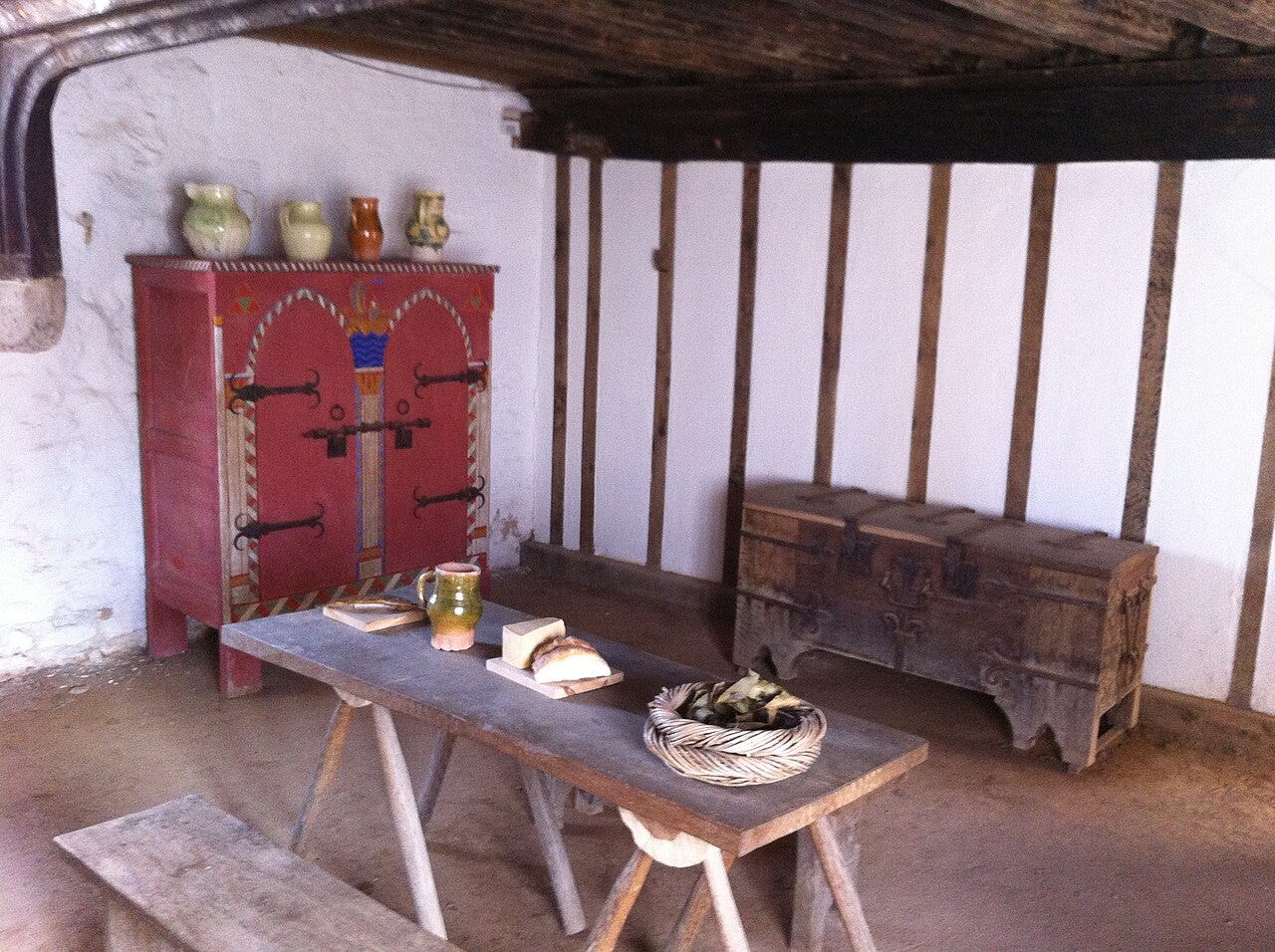How do you decide the right size for things? And what is ‘enough’?
Contestants on cookery competitions are criticised for portions that are too small or too large. Most of us in the UK and US are eating too much… and are overweight as a result (64% estimated) https://www.gov.uk/government/statistics/update-to-the-obesity-profile-on-fingertips/obesity-profile-short-statistical-commentary-may-2024
I start thinking that maybe I should use smaller plates ...
How big is a ‘pinch of salt’? (How long is ‘a piece of string’!)
I regularly cook too much for the three of us living here. Usually, it’s not a problem. We’re more than willing to eat the same meal two days running, and it’s easy enough to pop things in the fridge overnight. I’ve (mostly) learned to make my over-generous catering work for me: I’m happy that I always have a tub of home-made vegetable chilli sitting in the freezer to pull out on days I don’t feel like cooking.
We don’t generate much in terms of food waste – vegetable scraps go on the compost heap, bread crusts are crumbed for home-made veggie-burgers. I’m not uncomfortable about the quantities of food passing through our home.
In other areas of life, though, things are in need of a severe prune.
There’s still a lot of decluttering to do in terms of objects – goods and chattels. I was talking to some friends recently about how much ‘stuff’ most of us own nowadays. Sadly, there are still some families living in real poverty, where children don’t have beds: https://www.barnardos.org.uk/research/no-crib-impact-cost-living-crisis-bed-poverty
Why are we, as a species, so bad at sharing the world’s resources in an equitable way? Greed? Ignorance? Lack of compassion or imagination? Not challenging outdated assumptions about deserving/undeserving poor? (https://www.tutor2u.net/politics/topics/deserving-poor)
I don’t have answers – and I think it’s important to ask the questions.
It’s instructive to visit somewhere like the Medieval Merchant’s House in Southampton (https://www.english-heritage.org.uk/visit/places/medieval-merchants-house/). A rich trader in the thirteenth century had so much less in terms of belongings than most middle class families in northern Europe nowadays….
Photo via Creative Commons/wikipedia
My co-coaching buddy and I share a fascination with ‘tiny houses’. (wikipedia has a useful overview, and there are many examples on YouTube.) We’re both committed to reducing waste and arranging living spaces for maximum flow, so tiny houses offer lots of design tips. What do you actually need to live a satisfying life? How many – and what – possessions are enough?
I’ve pruned the contents of my kitchen cabinets in terms of rarely-used antique china, but I do like to cook, experimenting with recipes from all over the world, and I have a large array of herbs, spices and ingredients. I’d be unwilling to let go of those. I also enjoy crochet and sewing, so I want to hang on to my two boxes of yarn and my sewing supplies …
Hmm – it appears that pruning does not come naturally to me … I would have to change drastically to live in a tiny house.
‘Pruning’ is a useful metaphor when embarking on editing a book. How big do I want the finished article to be? What overall shape am I aiming for? (I still swear by Kurt Vonnegut’s summary of story shape: https://tenderhuman.com/shapes-of-stories-infographic). Do I want something loose and naturalistic, like the trees in my garden? I’m not naturally drawn to creating something as precise as topiary or bonsai ...
I’ve been pondering what needs adding and what I should prune as I continue editing my novel. Weighing up the balance of interiority, dialogue and action. I know I’m short on description in many chapters, and it’s important to ground the reader in where and when events are taking place. Useful feedback I received from one of the MA tutors.
Literal pruning has also been exercising my thoughts recently.
Back in January, I pruned the fig tree in my front garden. We had workmen coming to do some work at the side of the house, and I wanted to make the access easier. I tied the upward pointing branches down to the railing that runs adjacent, and patted myself on the back for a job well done.
A month or so ago, I decided I needed to prune it again – it had grown a lot and was obstructing the path. I’d booked tree surgeons to come and reduce overhanging branches from our neighbour’s trees, which had grown so big that they were shading our whole garden. I wanted to make sure they could move freely around the garden, so I set to with my secateurs. Last autumn, I’d read a piece by the wonderful Nicola Lamb – just as the leaves on my tree had shrivelled and fallen – and made a mental note to revisit it this summer:
I gathered up the fig leaves that I’d pruned, dehydrated them in in the oven, then made fig leaf syrup and froze powdered dried fig leaves to add to autumn cakes and crumbles. My husband make a sumptuous cheesecake following Nicola Lamb’s suggestion on quantities.
This week, the tree has regained its luxuriant, abundant spread. I welcome luxuriant growth in most places, but not here. OK, it has some use, in that it’s shading the window where our son works from home – but it’s also blocking free movement again.
Really, this fig tree is planted in the wrong place: adjacent to the path that runs round the front of our house. I believed – wrongly, it turns out – that it’s roots would be restricted because the soil there is so poor and stony. We had a fig tree in our previous garden, and enjoyed bumper harvests most years. I didn’t bother to look up planting advice before planting this tree: I knew how to grow figs! Mistake.
It’s now much too big. I’m starting to be concerned about its roots damaging the foundations of the house. I’m facing the prospect of having to chop it down to a fraction of its current size and then try to lift it – a job to leave till late autumn. The sap of figs, and even the leaves themselves, can irritate the skin, so better done when it has lost its leaves and is dormant. It’s probably too big to move now, but I don’t think I can really limit its root run without doing so.
I don’t want to lose it, so I’ve been researching propagation. My go-to for trustworthy garden information is the Royal Horticultural Society, and they offer reassurance. I can take hardwood cuttings in late autumn, which is when I’m planning to cut it back. https://www.rhs.org.uk/fruit/figs/grow-your-own
In this case, the necessary pruning is required because I didn’t bother to check the advice before planting it. Another reminder to do the research rather than trusting to half-remembered knowledge from thirty five years ago.
Challenge assumptions, ask questions, use imagination ….
One aspect of wisdom is questioning the accuracy and sufficiency of what you think you know.
You can never know enough – and living requires us to make decisions on the knowledge we have available at the time.







